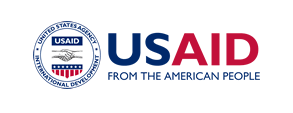The Health Policy Project ended in 2016. Work continued under Health Policy Plus (HP+) until 2022.
Resources
Search Publications
Comprehensive Package for Reducing Stigma and Discrimination in Health Facilities
- AssesS
Brief, standardized questionnaire on stigma and discrimination in the facility, plus user's manual
- Train
Training menus and material for facility staff, including action planning and Codes of Conduct
- Sustain
Check-lists and other items for administrators, to ensure the facility environment and policies support stigma-free services
In health facilities, people associated with HIV often experience negative attitudes and harmful actions that deter them from accessing services, disclosing information to providers, and adhering to treatment. Groups especially likely to face stigma and discrimination include people living with HIV, men who have sex with men, sex workers, people who inject drugs, and transgender individuals. Although stigma and discrimination pose major barriers to better health outcomes, effective action is possible. The Health Policy Project (HPP) has led a global effort to compile and refine a coordinated package of “best practice” tools for health facilities.
HPP brought together a group of international experts to review, prioritize, adapt, and synthesize existing measures and programmatic tools for stigma reduction. The resulting intervention package supports an evidence-informed response in health facilities and offers the following advantages:
- Synthesis of existing tools into a streamlined research-to-action approach
- A “total facility” approach that involves all levels of health facility staff
- A questionnaire, field-tested in six countries for broad applicability across diverse settings
- A “best of” set of training exercises culled from field experiences in nine countries in Africa, the Caribbean, and South and Southeast Asia
- Training menus for different types of facility staff and timeframes
- Action planning and policy development to support a sustained, multilevel response.
The tools in this package may be used or adapted to counter stigma and discrimination based on HIV status, gender identity, sexual orientation, and behaviors such as sex work or injecting drug use.
The Stigma-Reduction Package for Health Facilities
The broad objectives of the package are to support health workers in recognizing and challenging stigma and discrimination within health facilities and creating a safe, enabling environment for staff and patients, including people living with HIV and other key populations, such as men who have sex with men, transgender individuals, sex workers, and people who inject drugs. The major components of the package are as follows:
ASSESS
This includes a brief, standardized questionnaire for measuring the extent and nature of stigma and discrimination within a health facility. It may be used initially to produce baseline information and later to monitor progress. To develop the questionnaire, an international group of researchers assessed and synthesized existing measurement tools. The researchers then field tested the resulting questionnaire in China, Dominica, Egypt, Kenya, Puerto Rico, and St. Kitts and Nevis. Based on the results, the researchers extracted the most reliable, valid measures across settings. The questionnaire is accompanied by a user’s manual for implementation.
- Measuring HIV Stigma and Discrimination Among Health Facility Staff
- User’s Manual for Implementation (PDF)
TRAIN
The package includes participatory training modules, such as exercises to raise health workers’ awareness about stigma and discrimination in the health facility, and help change their attitudes and behaviors toward people living with HIV and other key populations. The training modules also cover basic skills on Standard Precautions. As part of the training, staff members develop action plans and their own Codes of Conduct. The training modules were selected based on effectiveness in field application across nine countries. Training program menus provide timetables for using selected core training exercises with different facility staff, including managers, doctors, nurses, support staff, trainers, and others. In delivering the program, it is recommended that the training be done in pairs, with one trainer who is a health worker and one who is a person living with HIV or a member of a key population group.
SUSTAIN
This kit includes tools and resources for ensuring that the facility environment and policies help support and sustain stigma-free HIV services. Facility managers develop policies and procedures, and ensure that appropriate supplies are available to support staff in providing stigma-free services. Administrators also play a key role in helping institutionalize new behaviors and attitudes. These activities may include strengthening referral services to nongovernmental organizations and social or gender-based violence services.
Toward a Stigma-Free Health Facility
The aim of the intervention package is to promote a stigma-free facility—one in which people living with HIV and other key populations are treated with respect and compassion, and provided high-quality care. In a stigma-free facility, all staff members are able to protect themselves from HIV transmission in the workplace. Staff members also feel confident in getting tested for HIV and, if testing HIV positive, continuing to work there.
Financial support for this work is provided by the U.S. President’s Emergency Plan for AIDS Relief (PEPFAR) and the U.S. Agency for International Development.

